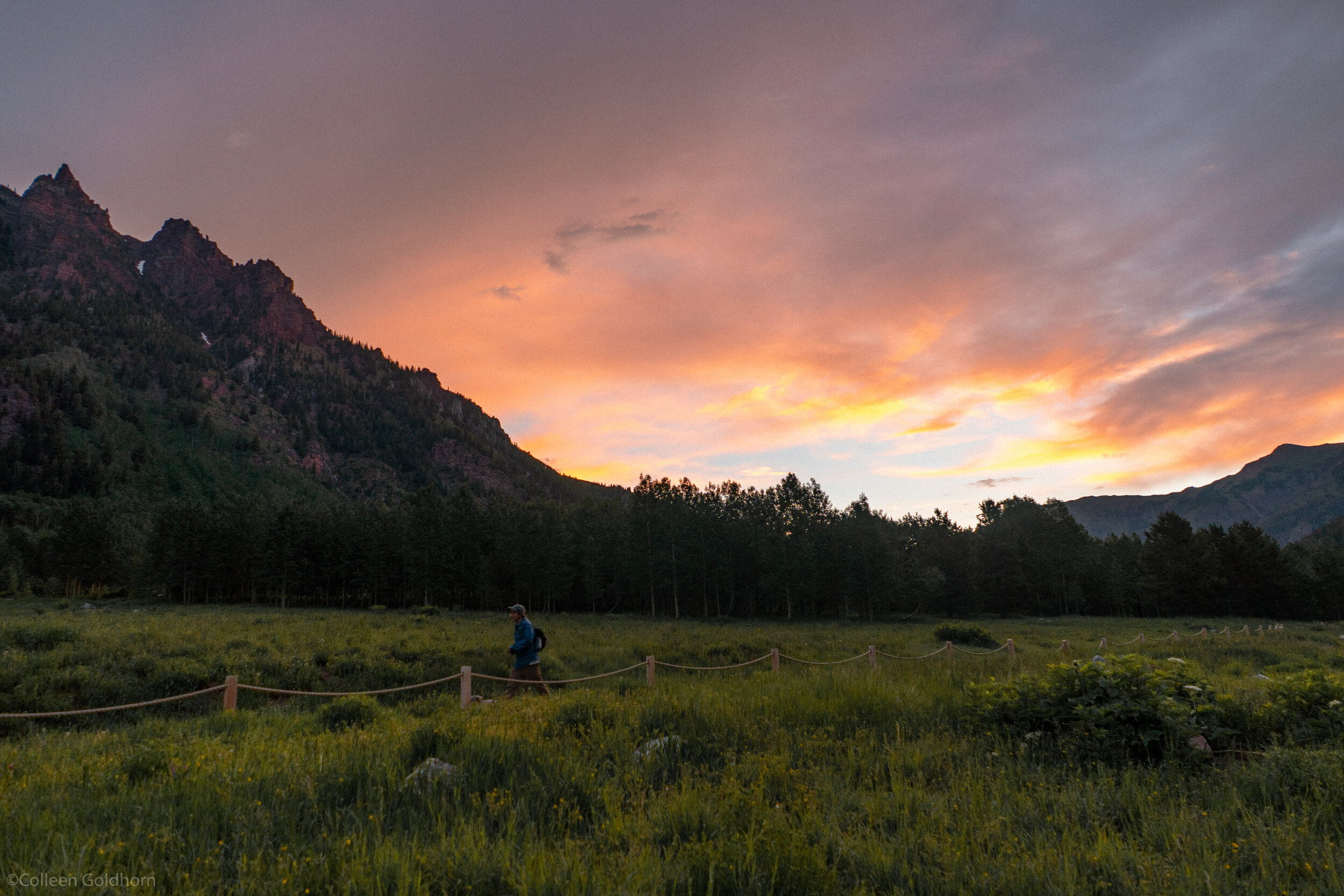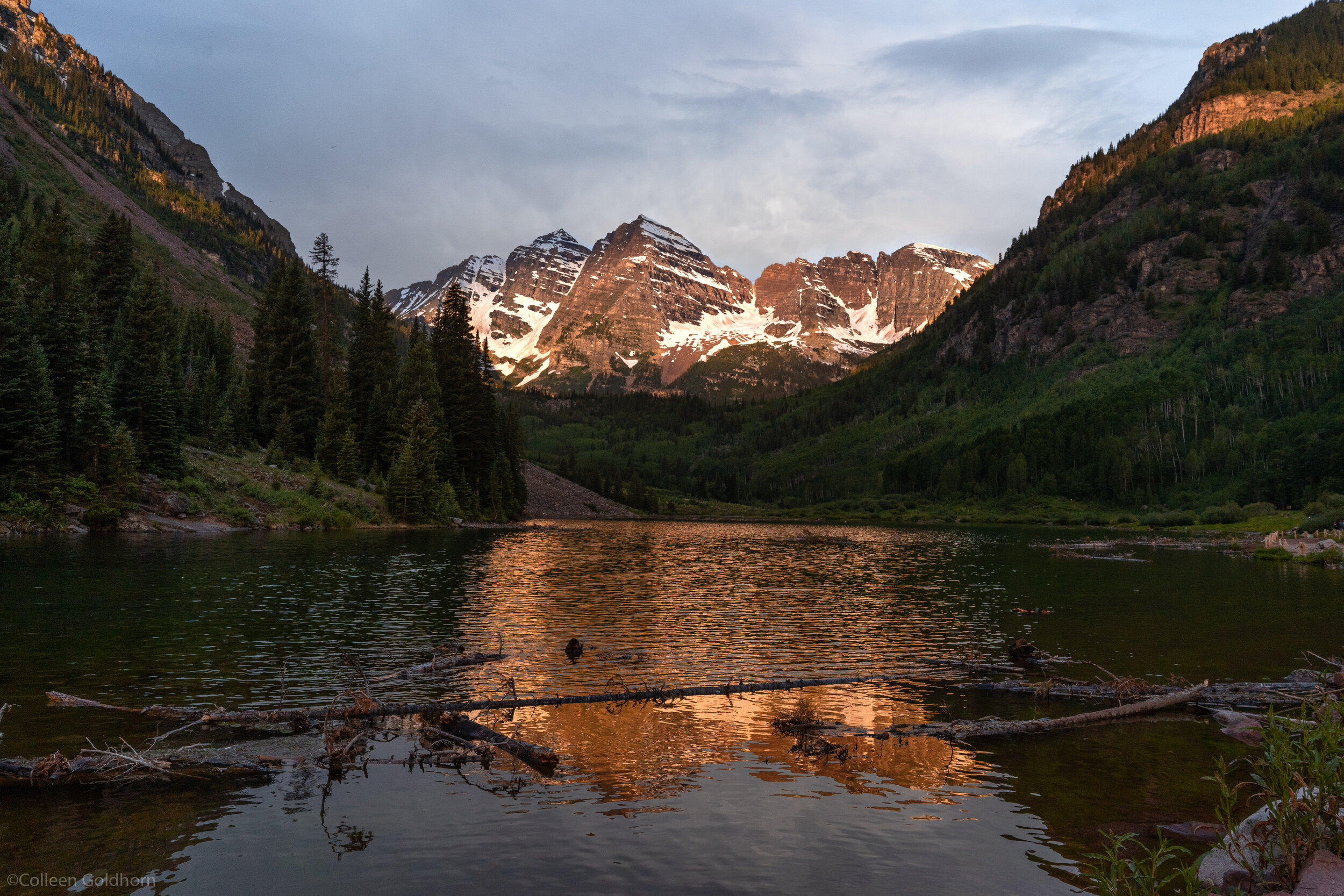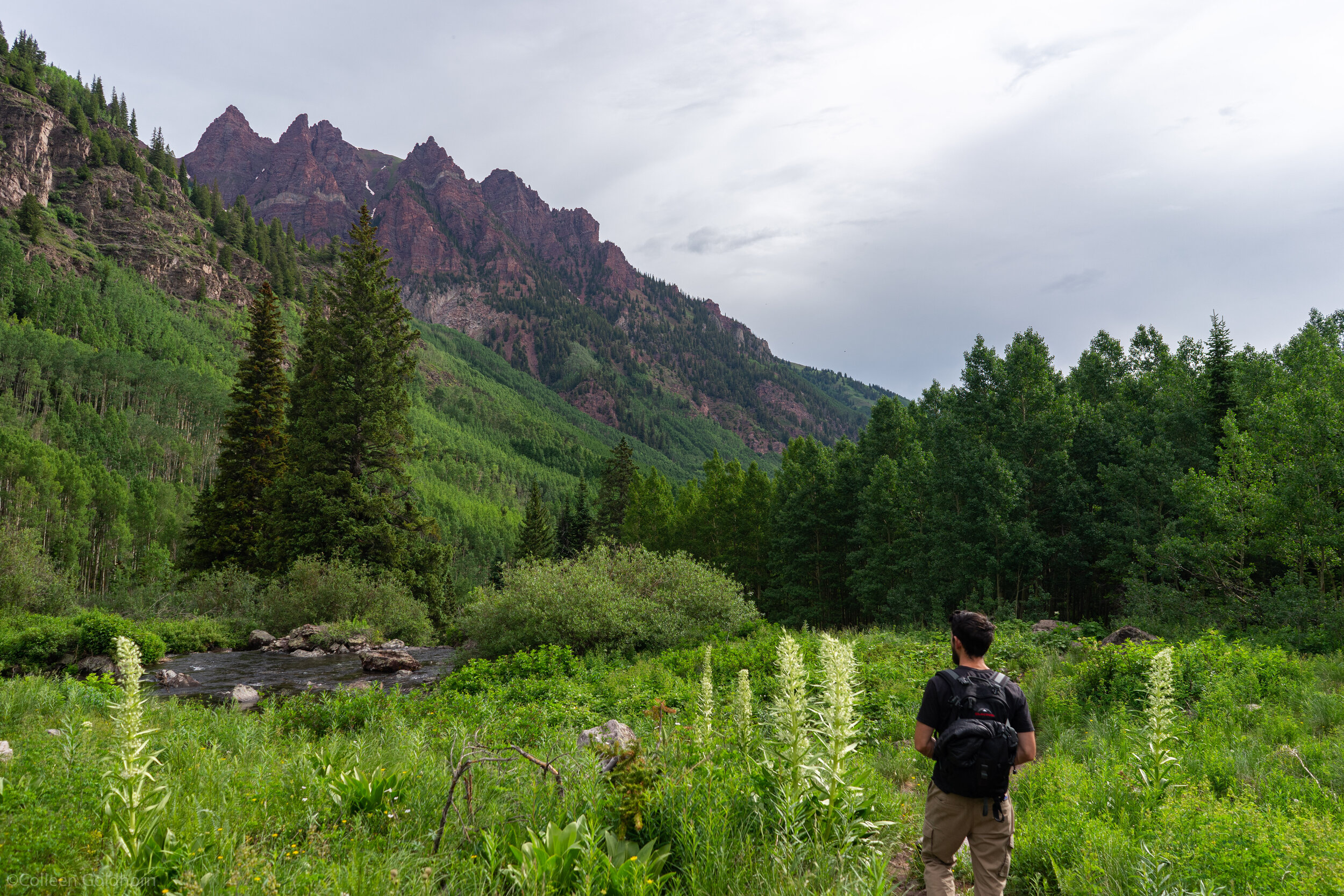Maroon Bells, Colorado
Total Distance: 1.9 miles
Elevation Gain: 106 feet
Trail Type: Loop
Difficulty: Easy
The Hike: Maroon Bells is most famous for the beautiful pink and red hues that cast over Maroon Peak at sunrise – it is one of the most scenic (and commonly visited) spots in Colorado because of this epic daily show.
Luckily, this picture perfect spot is easily accessed, and the short hike around the lake and neighboring forests is a great way to get a feel for this towering landscape. After soaking in the views at Maroon Lake, hikers can continue walking towards the mountains on a family friendly trail that travels through groves of Aspen, over turquoise mountain streams, and underneath towering mountains that make this hike feel like a dream.
The Details: Due to the high volume of crowds that visit this spot each year, a shuttle system has been implemented to preserve the landscape and help with parking. Both the shuttle and Maroon Creek Road are closed annually from late fall to late spring due to snow conditions – however, visitors are welcome to cross country ski, snowshoe, snow bike, hike, or snowmobile the 12.4 mile round trip road to The Bells.
To start your hike, park at the Aspen Highlands Ski resort, where you can hope on a shuttle to take you to The Bells ($8 for adults, $6 for children 6-16 + seniors 65 and older, free for children under 5). From here, the bus will take you down the short road to the scenic spot – most shuttle drivers give a history of the area along the way.
Once off the bus, follow the paved trail to the iconic landscape. After soaking in the famous views, continue right until the pavement ends. From there, follow signs for the Maroon Bells Scenic Loop. The loop will follow a gradual grade, and cross the ragging Maroon Creek as it flows from the snow covered mountains.
After finishing the loop and reaching the pavement once again, retrace your steps back to your car.
Gear: For this hike, we recommend bringing along either the Winter or Summer Day Hike Essentials, depending on the season. Micro-spikes or Snowshoes are strongly advised in the winter.
*The information in this article is for planning purposes only. Actual trail conditions may vary depending on environmental factors. It is always advised to get the latest trail information from a park office or ranger before you begin your hike.



